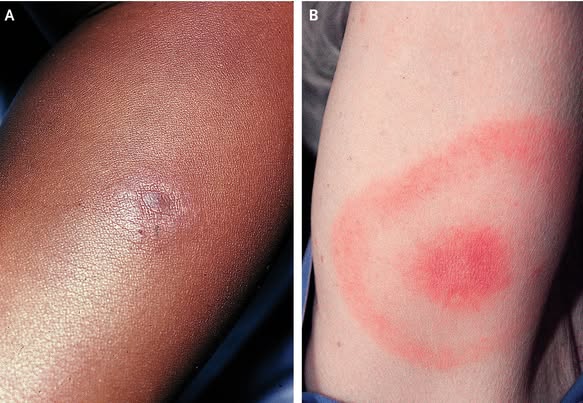
Black People Get Diagnosed with Lyme Disease… Later… In Life..
Aug 2
2 min read
0
0
0

Let’s talk about something that doesn’t get mentioned enough in outdoor spaces, Lyme disease, and how it affects Black people differently.
While anyone can get Lyme Disease from a tick bite, studies and real experiences show that Black individuals are often diagnosed much later than others. This delay happens because the classic signs, like the bullseye rash, don’t always look the same on darker skin, and many healthcare providers aren’t trained to recognize it. Add in systemic medical bias and a lack of public health messaging that speaks to our communities, and it’s easy to see why Lyme Disease often flies under the radar until it becomes a bigger problem. That’s why it’s important to understand the risks, learn prevention, and know what to look out for, especially as we spend more time hiking, exploring, and enjoying nature together.
Why Black People Often Get Diagnosed with Lyme Disease Later
1. Symptoms Look Different on Darker Skin:
One of the most recognizable early symptoms of Lyme disease is the “bullseye rash” (called erythema migrans), but on Black and brown skin, this rash may:
• Appear darker instead of red
• Look more like bruising or hyperpigmentation
• Be completely missed or misdiagnosed by doctors unfamiliar with how skin conditions show up on melanin-rich skin.
Most medical textbooks and training materials use images of lighter skin tones, so providers are often not trained to spot Lyme on Black skin.
2. Medical Bias and Dismissal of Concerns
Studies show that Black patients are more likely to have their symptoms downplayed or misdiagnosed in emergency or primary care settings. So when someone reports flu-like symptoms, fatigue, or pain (all early signs of Lyme), they may be told it’s something else—like stress, a viral infection, or even dismissed altogether.
3. Delayed Diagnosis = More Complications
The longer Lyme goes untreated, the worse it can get. People of color often aren’t diagnosed until it’s progressed to neurological symptoms, joint issues, or heart problems. This means:
• More aggressive treatment
• Higher risk of long-term damage
• More time off work or school
4. Lack of Public Awareness and Representation
Lyme awareness campaigns rarely show Black people, and many assume it’s a “white people in the woods” issue. This makes Black hikers less likely to:
• Know how to protect themselves
• Take early symptoms seriously
• Push for Lyme testing at the doctor
⸻
Reminders:
• You don’t have to be deep in the woods to get bitten.. ticks can be in tall grass, brushy areas, and even your own backyard.
• Wear long sleeves, pants, and use repellents with DEET or permethrin (treat clothing if possible).
• Do tick checks after every hike, especially in warm, moist areas like armpits, behind the knees, scalp, waistband, and groin.
• If someone notices fatigue, flu-like symptoms, or any unusual rash within 1–3 weeks of a hike or outdoor time, get it checked and ask for a Lyme test, especially if the area is known for ticks.
Check out the article provided at this link:
_edited.png)















